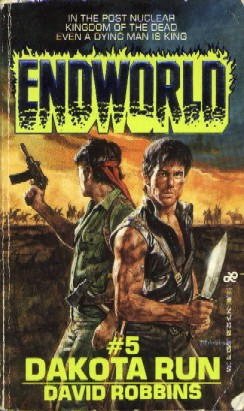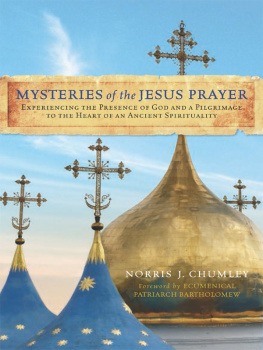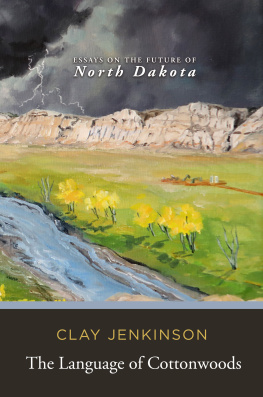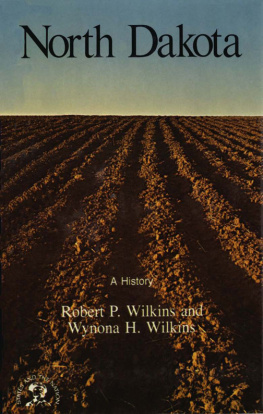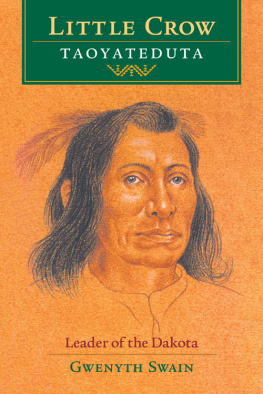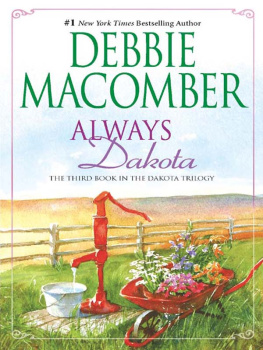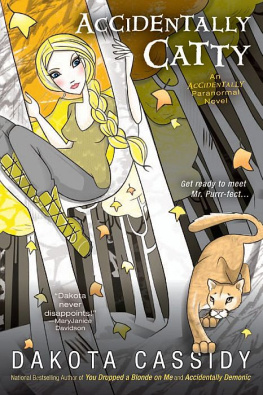Norris - Dakota
Here you can read online Norris - Dakota full text of the book (entire story) in english for free. Download pdf and epub, get meaning, cover and reviews about this ebook. publisher: Houghton Mifflin Harcourt, genre: Politics. Description of the work, (preface) as well as reviews are available. Best literature library LitArk.com created for fans of good reading and offers a wide selection of genres:
Romance novel
Science fiction
Adventure
Detective
Science
History
Home and family
Prose
Art
Politics
Computer
Non-fiction
Religion
Business
Children
Humor
Choose a favorite category and find really read worthwhile books. Enjoy immersion in the world of imagination, feel the emotions of the characters or learn something new for yourself, make an fascinating discovery.
Dakota: summary, description and annotation
We offer to read an annotation, description, summary or preface (depends on what the author of the book "Dakota" wrote himself). If you haven't found the necessary information about the book — write in the comments, we will try to find it.
A book of stories, a book of prayer, a book to be read meditatively and well, DAKOTA offers a timeless tribute to a place in the American landscape that is at once desolate and sublime, harsh and forgiving, steeped in history and myth. From the award-winning author of AMAZING GRACE, DAKOTA is Kathleen Norris at her most thoughtful, her most discerning, her best. She gives us, once again, a rare gift of hope and balance, a place to begin (Chicago Tribune) and assurance that wherever we go, we chart our own spiritual geography.
Norris: author's other books
Who wrote Dakota? Find out the surname, the name of the author of the book and a list of all author's works by series.
Dakota — read online for free the complete book (whole text) full work
Below is the text of the book, divided by pages. System saving the place of the last page read, allows you to conveniently read the book "Dakota" online for free, without having to search again every time where you left off. Put a bookmark, and you can go to the page where you finished reading at any time.
Font size:
Interval:
Bookmark:
First Mariner Books edition 2001
Introduction copyright 2001 by Kathleen Norris
Copyright 1993 by Kathleen Norris
ALL RIGHTS RESERVED
For information about permission to reproduce selections
from this book, write to Permissions, Houghton Mifflin Company,
215 Park Avenue South, New York, New York 10003.
Library of Congress Cataloging-in-Publication Data
Norris, Kathleen, date.
Dakota : a spiritual geography / Kathleen Norris.
1st Mariner Books edition
p. cm.
"A Mariner book"
ISBN 0-618-12724-0
1. South DakotaCivilization20th century. 2. North
DakotaCivilization20th century. 3. Norris, Kathleen,
dateHomes and hauntsGreat Plains. I. Title
F 656.2. N 66 2001
978.4'03dc21 2001016972
Printed in the United States of America
Book design by Robert Overholtzer
DOM 10
Excerpt from "Little Gidding" in Four Quartets, copyright 1943
by T. S. Eliot and renewed 1971 by Esme Valerie Eliot,
reprinted by permission of Harcourt Brace Jovanovich, Inc.,
and Faber and Faber Ltd.
In memory of Kathleen Dakota and Mary Beatrice
"I think that if we examine our lives, we will find that most good has come to us from the few loyalties, and a few discoveries made many generations before we were born, which must always be made anew. There too may sometimes appear to come by chance, but in the infinite web of things and events chance must be something different from what we think it to be. To comprehend that is not given to us, and to think of it is to recognize a mystery, and to acknowledge the necessity of faith. As I look back on the part of the mystery which is my own life, my own fable, what I am most aware of is that we receive more than we can ever give; we receive it from the past, on which we draw with every breath..."
Edwin Muir, An Autobiography
"Tell me the landscape in which you live, and I will tell you who you are."
Jos Ortega y Gassett
Dakota is everywhere, at least in diaspora. In January of 1993, when I first began traveling across the country to talk about Dakota, a woman from a San Francisco suburb told me that her mother had graduated from Lemmon High School in the 1950s. In New York City, a man showed me a photograph of the old Lemmon railroad station taken not long after it was built. His great-grandfather had helped lay the track to Lemmon in 1907, when the town was founded, and stayed for more than ten years.
In Minneapolis, a woman said that in the late 1960s her grandparents had lost their farm to the Oahe Dam. "It killed them," she added solemnly. "It took the spirit right out of them." In Chicago, a Lakota man asked me if I knew anything about the Catholic boarding school his father had attended. In Portland, a woman said she hoped the book would inspire her mother to talk about her upbringing on a homestead ranch near Kadoka. "She doesn't think her story has any value," the woman explained, "and much of it is so painful she doesn't want to revisit it. But I need to know about my family's past." In Seattle, a show of hands revealed that nearly half my audience had roots in the Dakotas.
These people and their stories point to a dilemma: the Dakotas are a place people are from, a place that has suffered a steady outmigration for the better part of a hundred years. What does this do to those of us who remain? Although I explored that question in Dakota, I don't pretend to have any answers. I did discover that many former Dakotans felt that my book reaffirms their sense of being glad to have escaped, while others found, especially in the descriptions of the Plains' physical beauty, a reminder of the place they were forced to leave for economic reasons, but dream of returning to one day.
And I've received letters from people who feel that I've somehow described their own "small town." A high school English teacher in New Jersey reported that what I'd said about gossip, provincialism, and fear of change captured the atmosphere at her school. I got similar letters from university professors and corporate executives. I was stunned by the variety of people the book had touched. A Mexican American priest wrote to say that Dakota had helped him to understand the older generation in his Los Angeles parish, mostly German Americans who had fled during the economic depression that first hit the Dakotas in the 1920s and intensified in the 1930s. The Methodist bishop in Fargo began giving copies of the book to all new clergy coming into North Dakota. Several people wrote to ask why I didn't write more about the Indian population of the Dakotas. I felt that many fine Indian writersElizabeth Cook-Lynn, Louise Erdrich, Adrian Louis, Susan Power, David Sealswere already doing that, and I needed to describe the Dakotas of my own experience. I wanted the book to be a portrait of a place, the kind of small Dakota town that has had little written about it by those who live there.
The question about Dakota I have been asked most often is "How have the people back home responded to the book?" That was something that had concerned me, and I am relieved that things have gone far better than I could have imagined. The book is now available at the Chamber of Commerce gift shop, the local newspaper, and Lemmon's two museums. People have told me that when they wear a name tag at business conventions out of state, bearing the name of Lemmon, South Dakota, strangers no longer say, "Where in the world is that?"
The story of how Dakota first fared in Lemmon makes a nice addendum to some of the book's observations of small-town mores. I hadn't talked much about Dakota while I was writing it, except when I asked two ranch families to read the manuscript and help me catch mistakes. But when reviews from out-of-state newspapers started arriving, sent by relatives and friends around the country, the local gossip mill went into high gear. My friend Alice called in a panic, asking what in the world I had done. She told me she'd gone to a coffee party where she'd heard that I had told a number of scandalous stories, naming names, putting people on the spot. When she asked if anyone had read the book, no one had. They had just heard bad things about it. And they were upset.
As residents of my town began to read the book, they calmed down. I had not "named names," and people were relieved to find that I had tried to give a balanced perspective, describing the joys of rural and small-town life as well as its less attractive aspects. When I was asked to preach again in my home church, I sensed that all was forgiven. And I passed the ultimate test: I did not move away once the book was successful. That is what many had expected. That would have been the usual thing.
Now, when I am asked about the local reaction to my book, I describe it as a mixture of wariness and pride. Dakotans at first seemed divided between those who delighted in my description of small towns, warts and all, and those who were alarmed that I had written about South Dakota in the first place. What if people read your book, one woman asked, and think we're all a bunch of hicks? What if all their negative stereotypes of the state are simply reinforced?
The question reflects the honest skepticism of people whose state is either ignored or disdained in the national media. My roots in South Dakota go back three generations, and I have now lived here for half of my life. I suspect I will always feel compelled to write about the place, and for good or ill, I am especially engaged by the contradictions I find here. In fact, I began this book because of them. In 1984, when I saw a notice placed by the North Dakota Quarterly calling for articles about the myths that help small Great Plains towns to survive, I had been brooding about the self-defeating myths that contribute to their demise.
Next pageFont size:
Interval:
Bookmark:
Similar books «Dakota»
Look at similar books to Dakota. We have selected literature similar in name and meaning in the hope of providing readers with more options to find new, interesting, not yet read works.
Discussion, reviews of the book Dakota and just readers' own opinions. Leave your comments, write what you think about the work, its meaning or the main characters. Specify what exactly you liked and what you didn't like, and why you think so.

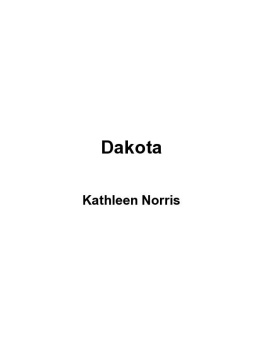


![Norris - Clybourne Park: [a play]](/uploads/posts/book/223649/thumbs/norris-clybourne-park-a-play.jpg)



